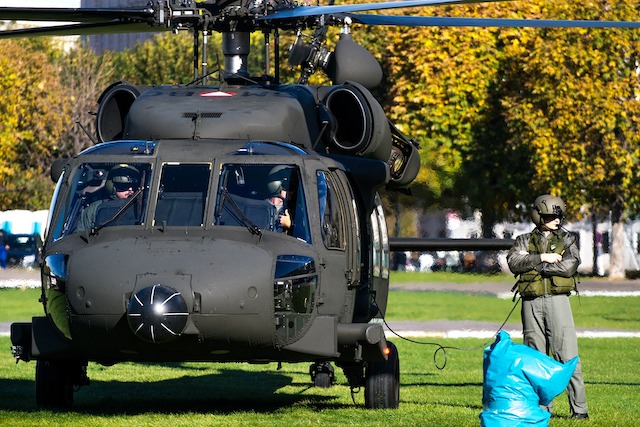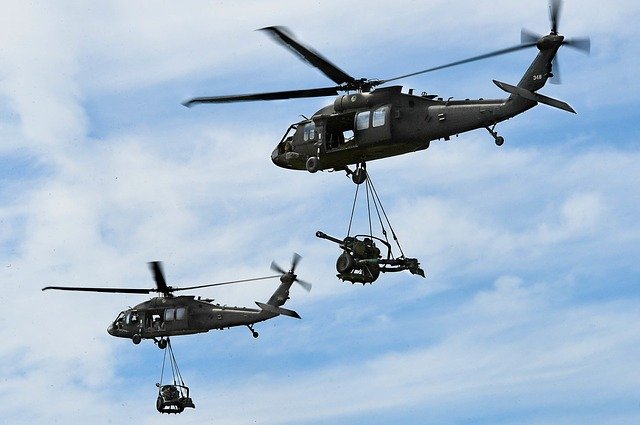Unlocking the Power: Improve Workflow with UH-60 Blackhawk Upgrades
Unlocking the Power: Improve Workflow with UH-60 Blackhawk Upgrades
Blog Article
Checking Out the Background and Advancement of Uh 60 Helicopters
As we dive right into the history of UH-60 helicopters, we uncover not simply a timeline of improvements but additionally the essential role they have actually played in shaping modern war. Join us as we reveal the appealing story behind the UH-60 helicopters and explore the influence they continue to have on military methods and operations worldwide.
Very Early Origins and Growth
The early beginnings and development of the Uh-60 helicopters can be traced back to the need for a flexible and trusted aircraft for numerous military operations. In the late 1960s, the United States Army acknowledged the limitations of existing helicopters and started the Energy Tactical Transport Aircraft System (UTTAS) program to develop a brand-new generation of energy helicopters. This program intended to resolve the imperfections of older helicopter designs by including advanced modern technologies and improved performance capacities.

Introduction of the UH-60 Black Hawk
With the UH-60 Black Hawk's entrance right into solution, a brand-new period in armed forces aeronautics dawned, marking a significant innovation in capabilities and convenience for the United States Military. Introduced in 1979, the UH-60 Black Hawk was designed as a multi-mission helicopter to change the aging fleet of UH-1 Iroquois helicopters. The Black Hawk's sophisticated attributes, including twin engines for boosted power and survivability, a four-blade main blades system for boosted lift efficiency, and a large cabin with the ability of suiting as much as 11 totally geared up soldiers, revolutionized the Army's air attack and energy capabilities.
The UH-60 Black Hawk swiftly proved its worth in a range of goals, from army transport and medical discharge to special procedures and search and rescue. Its versatility and reliability were further demonstrated throughout Operation Urgent Fury in Grenada in 1983 and the invasion of Panama in 1989. The Black Hawk's success caused its prevalent fostering not just by the U.S. Army however additionally by numerous other military forces and government companies worldwide.

Technical Innovations Over the Years
Throughout the evolution of the UH-60 Black Hawk helicopters, significant technical innovations have constantly improved their performance and capabilities. One of the crucial advancements is the integration of advanced avionics systems, including electronic cockpits with multifunction screens, flight administration systems, and advanced communication systems. These improvements have not only raised the situational understanding of the crew yet have also structured the total operation of the aircraft.

Furthermore, the adoption of much more powerful engines has actually significantly boosted the UH-60 Black Hawk's lift, ability to move, and speed capacity. The latest versions are furnished with much more reliable turboshaft engines that provide greater power result while keeping fuel performance.
Duty of UH-60 in Military Workflow
Having undergone substantial technological developments over the years, the UH-60 Black Hawk helicopters play a vital role in various armed forces operations as a result of their flexibility and dependability. These helicopters are widely made use of for goals such as troop transportation, clinical evacuation, air attack, and unique operations. The UH-60 is specifically valued for its capability to operate in diverse settings, ranging from complex city settings to rugged terrains, offering military pressures with an extremely adaptable aerial system.
Among the key staminas of the UH-60 is its ability for rapid implementation and extraction of troops in combat zones, improving operational performance and flexibility for armed forces commanders. Additionally, its robust building and construction and advanced avionics systems add to its efficiency in challenging problems, ensuring goal success even in aggressive settings. The UH-60's duty in supporting ground forces, carrying out reconnaissance objectives, and giving logistical assistance more underscores its significance in contemporary see military procedures. Generally, the UH-60 Black Hawk helicopters remain to be important possessions for militaries around the globe, allowing them to accomplish their purposes with precision and effectiveness.
Modern Applications and Future Prospects
In the modern landscape of military operations, the UH-60 Black Hawk helicopters remain to demonstrate their flexibility and strategic significance via innovative modern technologies and progressing goal abilities. Among the vital modern applications of the UH-60 is its essential function in medical discharge goals, where its adaptability and rate contribute in promptly transferring damaged workers from the combat zone to medical facilities. In addition, the UH-60's innovative avionics systems and boosted ability to move make it an important asset in special procedures, consisting of insertion and removal of unique pressures in hostile settings.
Looking towards the future, the UH-60 platform is poised to undertake additional innovations to boost its capacities. As armed forces requirements advance, the UH-60 Black Hawk helicopters are expected to innovate and adjust to fulfill the obstacles of tomorrow's functional environments.
Conclusion
Finally, the background and development of UH-60 helicopters have actually been noted by considerable developments in technology and their vital duty in armed forces operations. From their early beginnings to their contemporary applications, these helicopters have actually continuously adapted to satisfy the transforming requirements of the armed force - uh-60 blackhawk. With continuous innovations in technology, his explanation the future prospects for UH-60 helicopters continue to be encouraging as they proceed to play a crucial duty in numerous military objectives
Sikorsky Airplane Company, a popular helicopter supplier, reacted to the UTTAS program's needs by designing the UH-60 Black Hawk helicopter. Introduced in 1979, the UH-60 Black Hawk was made as a multi-mission helicopter to change the aging fleet of UH-1 Iroquois helicopters.Having undergone substantial technological advancements over the years, the UH-60 Black Hawk helicopters play an essential duty in different armed forces procedures due to their flexibility and dependability.In the contemporary page landscape of army operations, the UH-60 Black Hawk helicopters continue to demonstrate their adaptability and tactical significance via innovative technologies and advancing goal capacities. As army needs progress, the UH-60 Black Hawk helicopters are anticipated to adapt and introduce to satisfy the difficulties of tomorrow's functional settings.
Report this page